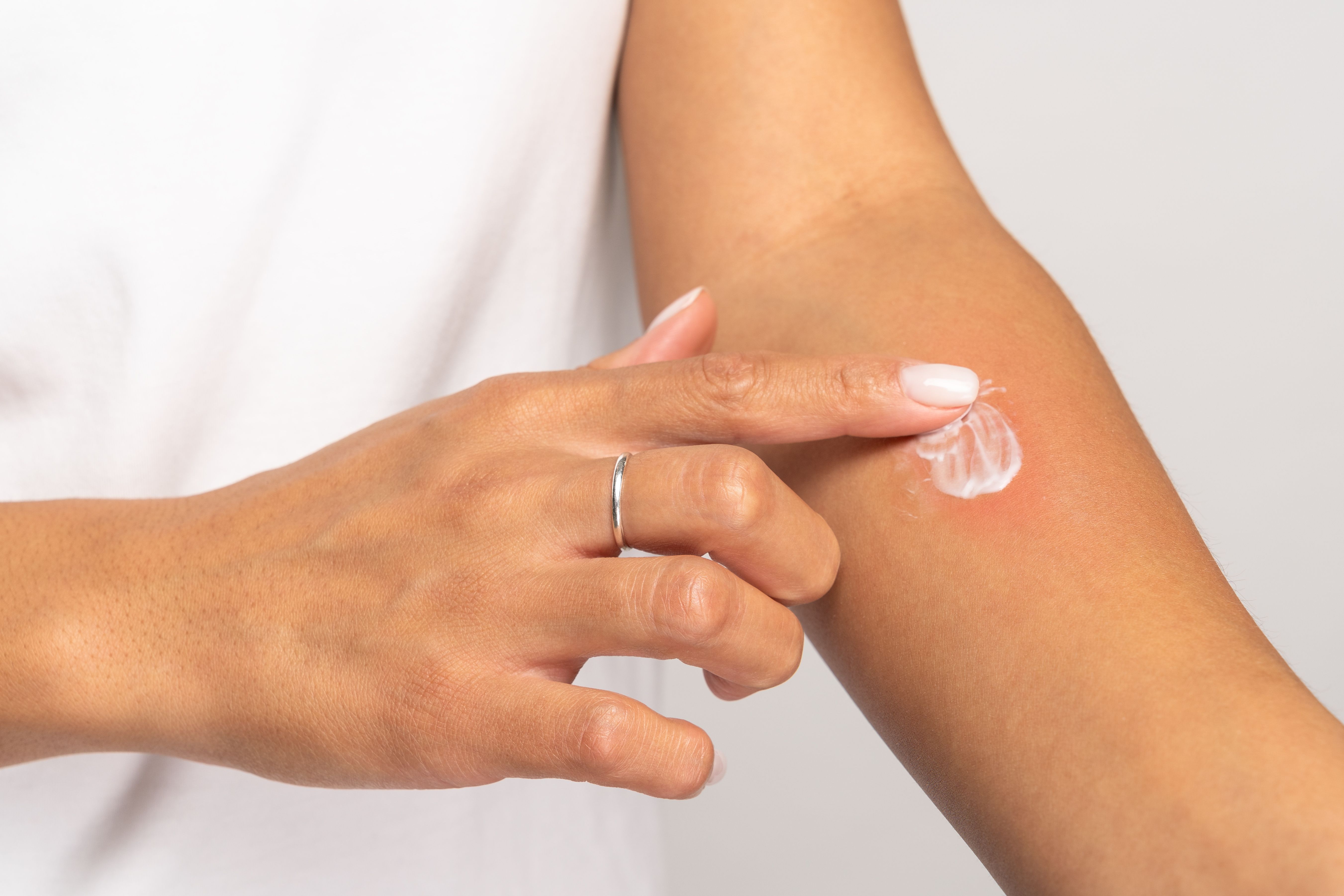- Center on Health Equity & Access
- Clinical
- Health Care Cost
- Health Care Delivery
- Insurance
- Policy
- Technology
- Value-Based Care
Clinical Characteristics, Outcomes of Patients With Plaque Psoriasis on Tapinarof Cream
Two posters presented at the 2023 Fall Clinical Dermatology Conference examined patient demographics, clinical characteristics, and outcomes in patients with plaque psoriasis treated with tapinarof cream.
Two posters presented at the 2023 Fall Clinical Dermatology Conference measured the efficacy and real-world use of tapinarof cream 1%, a first-in-class, non-steroidal, topical aryl hydrocarbon receptor (AhR) agonist, for patients with plaque psoriasis.

The FDA approved tapinarof for the treatment of adults with plaque psoriasis and is currently being investigated for children 2 years and older with psoriasis.
The first poster aimed to investigate the baseline demographics, clinical, and treatment patterns of patients being treated with tapinarof cream in routine practices, to better understand the real-world use of this drug.1
A retrospective analysis was conducted in adults diagnosed with plaque psoriasis between January 1, 2016, to June 30, 2023, from a payor claims database.
All patients included in the analysis initiated tapinarof cream between May 23, 2022, and December 31, 2022, were 18 years or older at the start of treatment and had at least a 12-month baseline period prior to initiation and had at least 6 months of follow-up after initiation. Patients who were pregnant before or after initiation of treatment were excluded.
Of a total of 1,709,283 patients with plaque psoriasis, 7902 initiated tapinarof cream. The mean (SD) age of patients was 51.1 (13.8) years and 4183 (52.9%) were female.
These patients had comorbidity profile similar to that of the general US population with plaque psoriasis, with the most common comorbidity being psoriatic arthritis (8.3%). Cardiometabolic comorbidities were also common, including hypertension (23.6%), hyperlipidemia (18.8%), and diabetes (15.1%).
Additionally, approximately 24% of patients had received therapy prior to taking tapinarof cream. Furthermore, while 65% of patients reported using tapinarof cream as a monotherapy, health care providers also found utility for combining tapinarof cream with other treatments, such as other topical agents, systemic agents, and/or phototherapy.
The second poster followed a multicenter, open-label phase 4 trial of adults with mild-to-severe intertriginous plaque psoriasis who received tapinarof cream 1% once daily for 12 weeks using patient-reported outcomes.2
Patient-reported outcomes included:
- Change in Peak Pruritis Numerical Rating Scale (PP-NRS) score for intertriginous areas by visit (Weeks 1, 2, 4, 6, 8, and 12).
- Proportion of patients with a PP-NRS baseline score of 4 or more who achieved a point reduction (≥4) from baseline by visit.
- Change in Dermatology Life Quality (DLQI) score by visit.
- The Patient Satisfaction Questionnaire assessments on patients’ satisfaction with tapinarof efficacy, formulation elegance, application ease, impact on daily life, and preference for tapinarof cream vs prior psoriasis therapies.
Tapinarof cream showed good efficacy, through rapid improvement in mean (SD) PP-NRS score of −1.1 (2.4) at Week 1, which continued through Week 12 with a mean (SD) score of −3.8 (3.9). Additionally, at Week 12, 75% of patients with a PP-NRS score of 4 or more at baseline achieved the gold standard for clinically meaningful reduction in PP-NRS.
Furthermore, patients reported a highly positive perception of tapinarof cream, especially with application of ease (100%), cosmetic elegance (90.3%), efficacy (80.6%), confidence in tapinarof (80.6%), and application time not impacting everyday life (90.3%).
Therefore, the study suggests that tapinarof cream is an effective treatment option for patients with mild-to-severe plaque psoriasis, with no restrictions regarding duration, extent, or location use for sensitive and intertriginous areas.
References
1. Fournier J, Sawad AB, Zwick E, et al. Early real-world description of baseline demographics and clinical characteristics of patients with plaque psoriasis on tapinarof cream 1%. Poster presented at: 2023 Fall Clinical Dermatology; October 19-22, 2023; Las Vegas, NV.
2. Sofen H, Tyring S, Johnson SM, et al. Tapinarof cream 1% once daily improved patient-reported outcomes in the treatment of mild to severe intertriginous plaque psoriasis. Poster presented at: 2023 Fall Clinical Dermatology; October 19-22, 2023; Las Vegas, NV.
